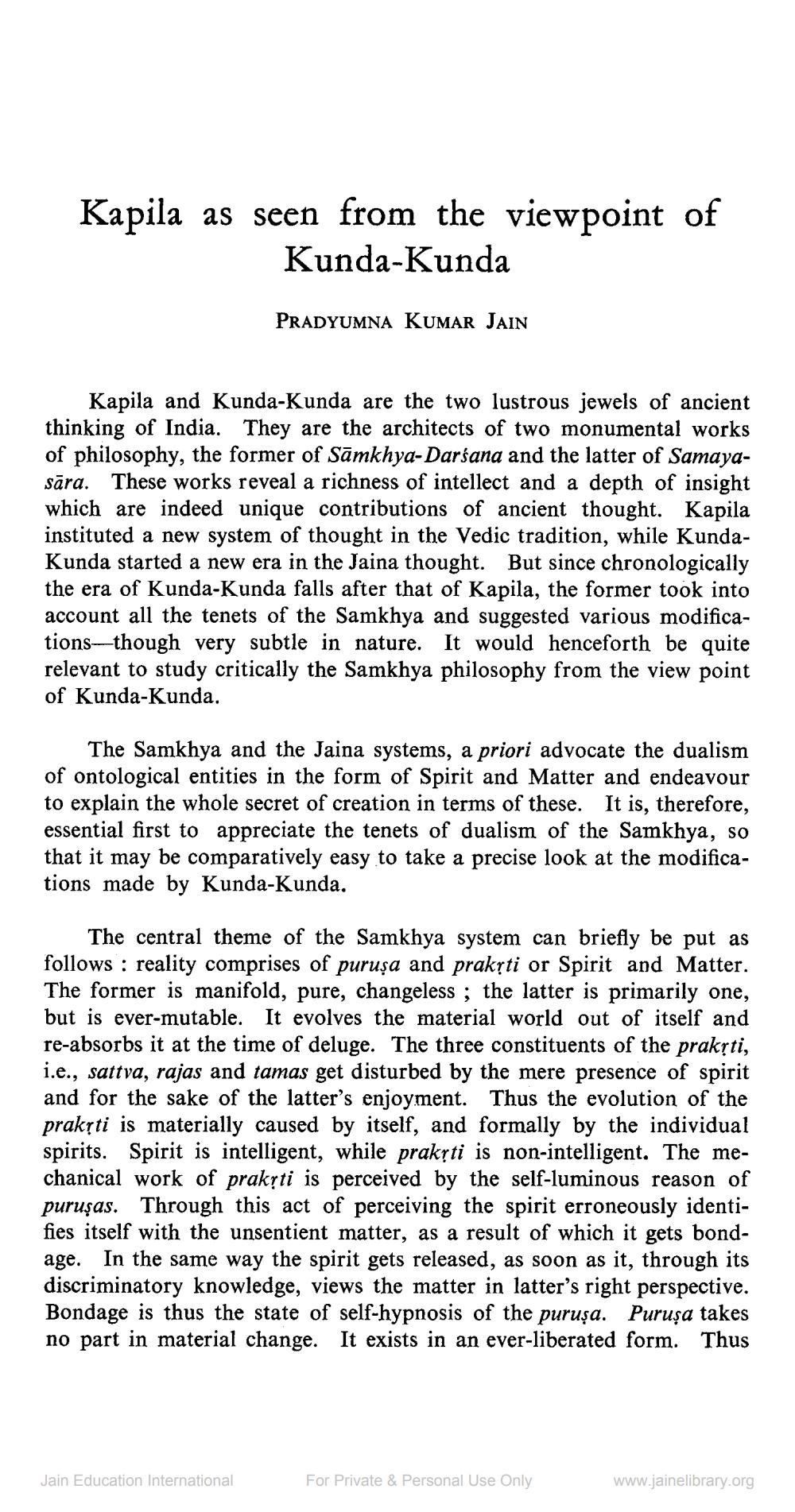________________
Kapila as seen from the viewpoint of
Kunda-Kunda
PRADYUMNA KUMAR JAIN
Kapila and Kunda-Kunda are the two lustrous jewels of ancient thinking of India. They are the architects of two monumental works of philosophy, the former of Sāmkhya-Darśana and the latter of Samayasāra. These works reveal a richness of intellect and a depth of insight which are indeed unique contributions of ancient thought. Kapila instituted a new system of thought in the Vedic tradition, while KundaKunda started a new era in the Jaina thought. But since chronologically the era of Kunda-Kunda falls after that of Kapila, the former took into account all the tenets of the Samkhya and suggested various modifications—though very subtle in nature. It would henceforth be quite relevant to study critically the Samkhya philosophy from the view point of Kunda-Kunda.
The Samkhya and the Jaina systems, a priori advocate the dualism of ontological entities in the form of Spirit and Matter and endeavour to explain the whole secret of creation in terms of these. It is, therefore, essential first to appreciate the tenets of dualism of the Samkhya, so that it may be comparatively easy to take a precise look at the modifications made by Kunda-Kunda.
The central theme of the Samkhya system can briefly be put as follows : reality comprises of purușa and praksti or Spirit and Matter. The former is manifold, pure, changeless; the latter is primarily one, but is ever-mutable. It evolves the material world out of itself and re-absorbs it at the time of deluge. The three constituents of the prakrti, i.e., sattva, rajas and tamas get disturbed by the mere presence of spirit and for the sake of the latter's enjoyment. Thus the evolution of the praksti is materially caused by itself, and formally by the individual spirits. Spirit is intelligent, while praksti is non-intelligent. The mechanical work of praksti is perceived by the self-luminous reason of puruşas. Through this act of perceiving the spirit erroneously identifies itself with the unsentient matter, as a result of which it gets bondage. In the same way the spirit gets released, as soon as it, through its discriminatory knowledge, views the matter in latter's right perspective. Bondage is thus the state of self-hypnosis of the puruşa. Puruşa takes no part in material change. It exists in an ever-liberated form. Thus
Jain Education International
For Private & Personal Use Only
www.jainelibrary.org




